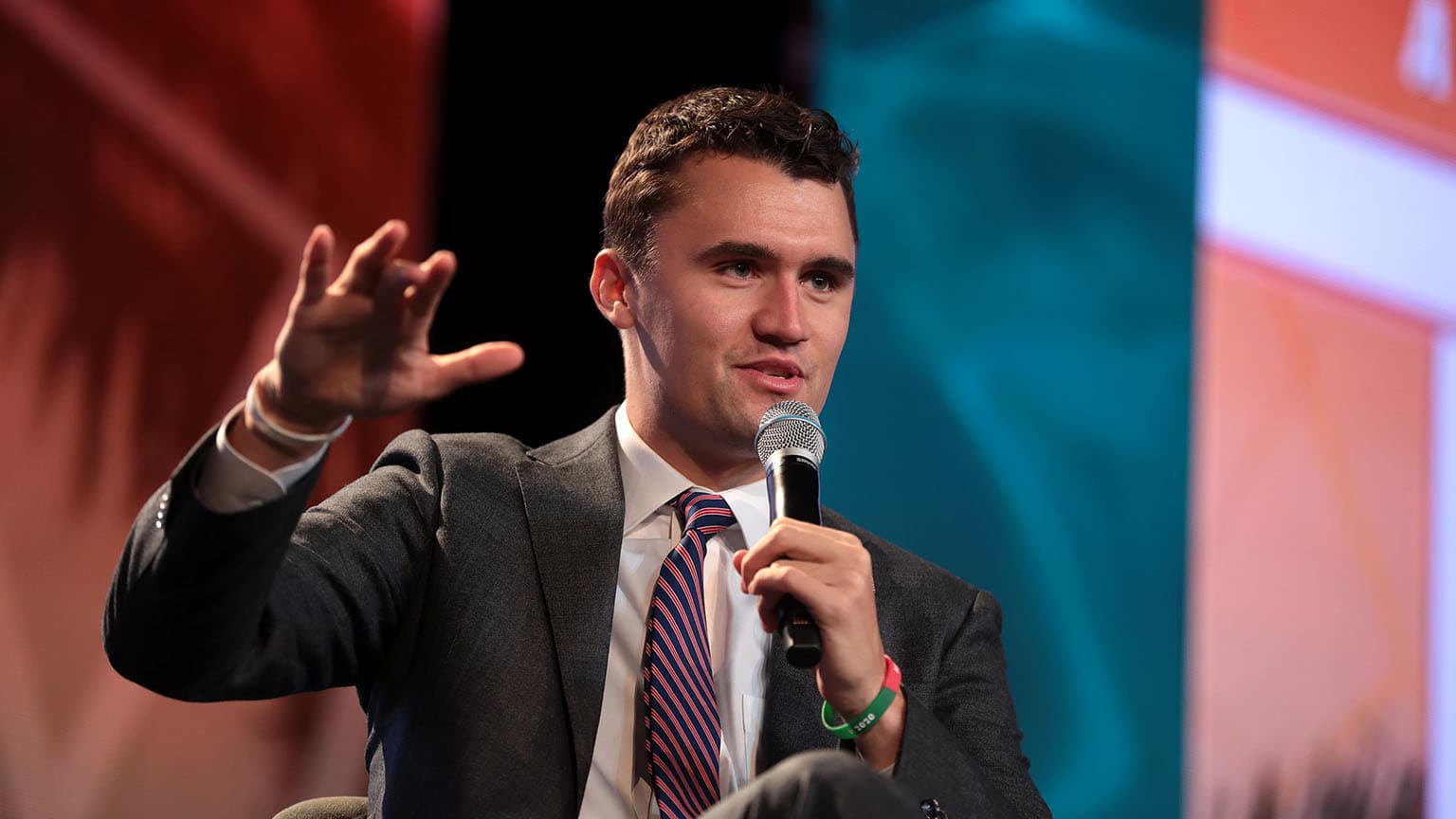Chart: Americans Agree
The Charlie Kirk Assassination
How consensus against political violence was not the story that took hold
Key Points
After Charlie Kirk was assassinated, the vast majority of Americans condemned the violence, as did every major political leader from both parties.
But scattered inflammatory comments from obscure left-wing social media users were systematically amplified by right-wing activists seeking to shame and cancel.
The Trump White House then joined the outrage campaign, transforming isolated trolling into calls for canceling and other consequences.
The result was the marginalization of the original consensus in favor of a narrative about controversy and division.

Charlie Kirk speaking at an event in 2018. Image: Gage Skidmore / Wikimedia.
On September 10, 2025, a gunshot cracked across Utah Valley University. Charlie Kirk, the 31-year-old founder of Turning Point USA and one of the most visible figures in young conservative politics, collapsed with a bullet wound to the neck. Within hours, he was dead.
What followed should have been the dominant story: Every major figure of the Republican and Democratic parties condemned the violence. College Democrats and Republicans issued rare joint statements. The vast majority of Americans put aside their disagreements about Kirk’s politics to unite against violence in public life.
But that was not the story many Americans heard.
Outrage Amplification
In the hours after the shooting, a tiny faction of left-leaning social media users posted mocking or celebratory comments. Right-leaning activists responded by scouring the internet for every inflammatory remark they could find. They posted names, alerted employers, and called for consequences. Then the White House and other MAGA leaders jumped in, amplifying the outrage, using their platforms to transform scattered trolling into evidence of systemic liberal hatred.
This was all fuel for a media narrative of “mounting political anger and polarization” as America’s defining response, while the actual consensus—nearly everyone condemning political violence—barely registered.
What Americans Actually Think
Only days after Kirk’s assassination, The Economist/YouGov poll asked about political violence. Strong majorities of Democrats, Republicans, and Independents agreed that political violence is never justified.
Chart: Americans Agree
Details
| Question | Do you think it is ever justified for citizens to resort to violence in order to achieve political goals? |
| Response | No, violence is never justified |
| Poll Main Page | The Economist/YouGov Poll, September 12 - 15, 2025 |
| Interview Period | Sep. 12, 2025 to Sep. 15, 2025 |
| Sample Size | 1,567 |
| Policy Context | When this poll was conducted in mid-September 2025, the prominent conservative activist Charlie Kirk had been assassinated the week before. |
| Insight | |
| Share Link | Political Violence : YouGov, Sep. 16, 2025 |
Similar numbers said celebrating the death of an opponent is unacceptable.
The reality was strong agreement, but the “vibe” in our media-driven culture was bitter division.
A Familiar Pattern
This isn’t new. In 2022, a man broke into the home of House Speaker Nancy Pelosi, the Democrat from San Francisco. Not finding her, he attacked her 82-year-old husband, Paul Pelosi, with a hammer.
Most of the reaction was bipartisan condemnation. But some on the right trolled the situation. Donald Trump Jr. had a mocking meme. Elon Musk spread a conspiracy theory. Even Charlie Kirk, after condemning the violence, suggested it would be patriotic if someone posted bail for Pelosi’s attacker.
These provocations then drew reactions from the other side, and the original consensus was overshadowed.
Right versus Left
The trolling that followed the Pelosi and Kirk attacks had an important difference: With Pelosi, provocateurs like the president’s son, Musk, and Kirk all had massive online followings. Although they were making fringe comments, their social media reach automatically guaranteed amplification.
In contrast, the Kirk assassination provocateurs were obscure, often anonymous social media users on the left. Ironically, they were amplified by right-leaning activists seeking to shame and cancel. And when Trump administration officials jumped in—publicly urging employers to fire people who disparaged Kirk after his death, hinting at visa consequences for foreign nationals who did the same, pressuring Disney to suspend late-night host Jimmy Kimmel—things escalated to a new level. If it weren’t such a weird phrase, it could be called the “weaponization of political violence.”
The Cycle of Outrage
Note how this pattern feeds on itself:
A tiny faction of people makes light of political violence.
Opponents express outrage, thereby amplifying the original message.
Media outlets chase the controversy.
Outrage sparks counter-outrage, and the cycle deepens.
Each turn of the wheel increases the distance between the original consensus and the subsequent “reality” of deepening controversy.
Keeping Perspective
America is deeply divided on many issues. Political violence is not one of the them. Yet the spectacle of political violence is a strong trigger for fringe views to be amplified out of proportion—especially when the government itself is part of the amplification. This can create its own twisted reality, where people in the original consensus end up marginalized as bystanders to the subsequent controversies.
Although we may not be able to stop the cycle of outrage, we can at least recognize and resist its influence on our own thinking. We can keep sight of the original consensus against political violence, and not let ourselves be pulled into believing that fringe provocations—even when amplified into the mainstream—actually represent how most people feel.